Guidance for Selection of Press brake
Press Brake is a universal processing equipment, is used to process the thin plate into the required shape and size, and is widely applied in the manufacturing industry. However, how to choose a suitable Press Brake is very critical, and we have to select a Press Brake that are really suitable us from processing capacity, processing efficiency, economy and other aspects of a Press Brake. The following points can help you choose the most suitable Press Brake.
I. Processing Capacity (work capacity and length of Press Brake)
The Bending Force (F1) could be calculated according to the bending length, plate thickness, material, heat treatment state, bending size and other factors of the maximum specification of the workpiece. At this time, the calculated bending force is not the final required Press Brake working capacity (F), and the following points must be noted:
1. The Press Brake capacity (F) must be greater than 1.2 times the required bending force of the workpiece (F1).
2. The length of the bending workpiece at full load must be greater than 70% of the length of the workbench of Press Brake.
According to the above, the working capacity of the Press Brake and the length of the workbench could be determined.
II. Basic Parameters of the Equipment and Mold
According to the sizes of the workpiece before and after bending, shape, and the way of the discharge of material, the following basic parameters can be determined:
1. Mould: firstly sort out the workpiece bending process, that is, according to the size after bending and shape, to determine the size and type of Press Brake mould, such as, the height and shape of the upper die, the size or shape of the lower die groove;
2. Loading mould height and stroke: the parameter could be determined according to the mould and discharge mode;
3. Back gauge stoke: the parameter could be determined according to the maximum size of the bending;
4. Stand column separation distance and throat depth: the stand column separation distance and throat depth could be determined according to the bending length and the way of discharge of the material.
III. Type of Back Gauge
Two-Axis Back Gauge Four-Axis Back Gauge
Six-Axis Back Gauge
1. Single-axis back gauge (positioning stop refers to the front and rear X): applicable to the bending of the simple workpiece, such as Z-shaped, L-shaped, U-shaped, multi-knife bending in the same direction, etc.;
2. Two-axis back gauge (positioning stop refers to the front and rear X, positioning stop refers to the upper and lower R): applicable to the bending of the more complex workpiece, such as bending the same side of a plate into the two directions for multiple times, large bending size, non-90 degree bending, etc., and the use of Press Brake with compensation mechanism is also recommended to use two-axis back gauge and when bending small size workpiece, the two-axis back gauge can avoid positioning stop finger hitting the mould.
3. Four-axis back gauge (positioning stop refers to the front and rear X, positioning stop refers to the upper and lower R, positioning stop refers to the left and right Z1, Z2): applicable to the bending of the workpiece with multi-station and length changes, and it also could improve the applicable security, as well as increase the efficiency.
4. Six-axis back gauge (positioning stop refers to the front and rear X1, X2, positioning stop refers to the upper and lower R1, R2, positioning stop refers to the left and right Z1, Z2): two positioning stops refer to independently move forward and backward, upward and downward, as well as toward the left and right, and it is applicable to the bending of the complex workpiece, such as beveled edge bending, non-90-degree multi-knife bending, etc.
IV. Selection of Press Brakes
1. Electro-hydraulic synchronous Press Brake: adopts the electro-hydraulic proportion synchronous control system, as well as has a high parallelism of slider operation, good repeat positioning accuracy, and strong load-deflection resistance. For the processing of the 3-40mm metal plate and the metal plate with length 2000m-16000mm, it is suitable to select the electro-hydraulic synchronous Press Brake, and the equipment tonnage range of 50 tons – 3000 tons.
2. Electric Press Brake: it uses a servo motor to drive heavy-duty ball screw actuate the slider to do reciprocating motion, and drive the slider on the upper die force on the lower die on the workbench, so that the metal plate would be bent into the required shape and size. For the metal plate with the length of 3mm below the length of 2000 below (aluminum plate, copper plate, stainless steel plate, carbon steel plate), it is suitable to use the electric Press Brake, because the electric Press Brake consumes less electricity, occupies less space, is of high efficiency, good stability, high precision, and can be operated immediately with powering on.
V. Peripheral Support
1.The bending manipulator could be configured for processing the larger quantities of workpieces;
2.The Press Brake with bending sheet follower could be configured for processing the larger workpieces;
3. Safety laser protection can be configured for ensuring the safetys.
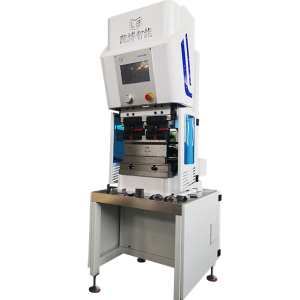
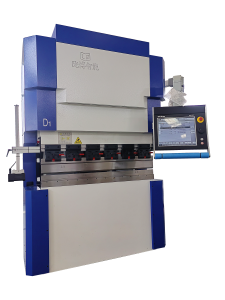
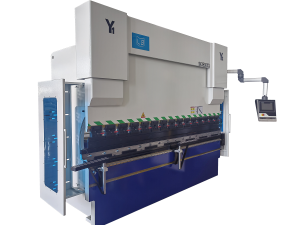
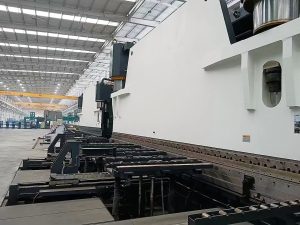
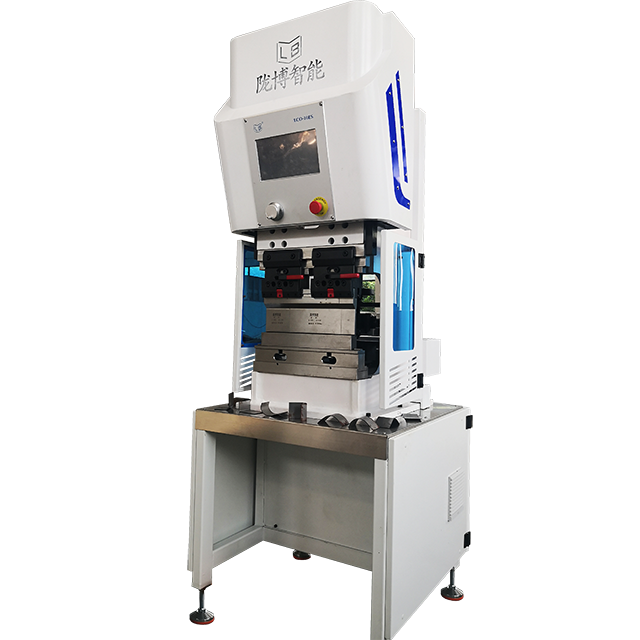
您好,这是一条评论。若需要审核、编辑或删除评论,请访问仪表盘的评论界面。评论者头像来自 Gravatar。